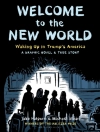Offers a European view of racial attitudes in the US during the era of the Harlem Renaissance and Jim Crow, with relevance to today’s Black Lives Matter and #Me Too movements.
Marylin, a novel by the Austrian writer Arthur Rundt about a mixed-race woman passing as white, moves from Chicago to New York City and concludes tragically on a Caribbean island. First published in 1928 and now translated into English, it offers a European view of racial attitudes in the US during the era of the Harlem Renaissance and Jim Crow. Rundt’s short but powerful novel touches several vital issues in society today, engaging each in a way that prompts further examination and cross-fertilization. First, it sheds historical light on what has become painfully obvious in the Black Lives Matter era (if it wasn’t before): the continued injustice experienced by Blacks in America as an effect of structural racism. Second, it confronts issues of migration and hybrid identities. Third, it has relevance for Women’s Studies through the title character’s interaction with the patriarchy. Through these connections, it responds to a growing current in German Studies concerned with diversity and inclusion and integrating the discipline into the broader humanities. An introduction and an afterword, both of them extensive and scholarly, contextualize the novel in its time and as it relates to ours.
İçerik tablosu
Acknowledgments
Introduction –
Peter Hoeyng and Chauncey J. Mellor
Marylin
Afterword –
Priscilla D. Layne
Yazar hakkında
PRISCILLA LAYNE is Professor of German, with an adjunct appointment in African, African American and Diaspora Studies, at the University of North Carolina.












